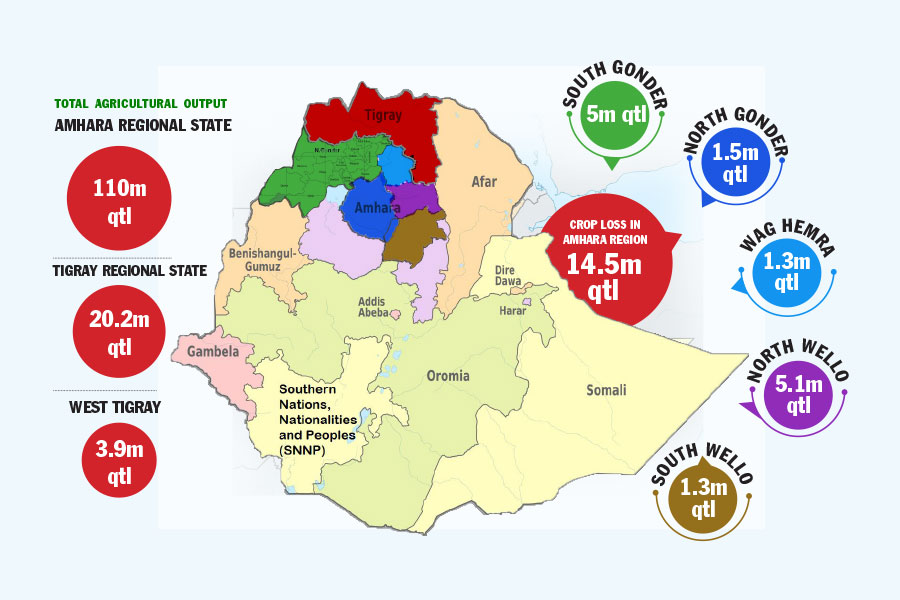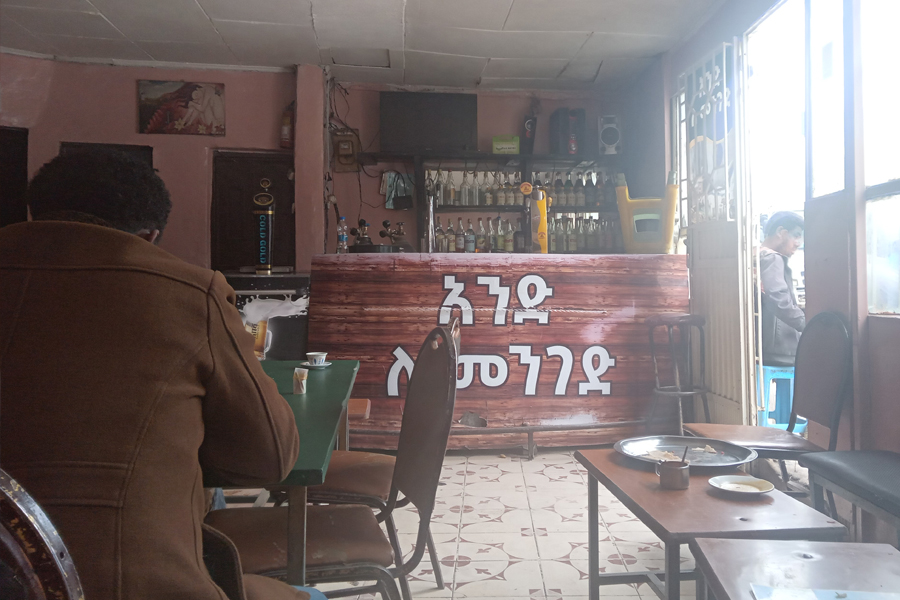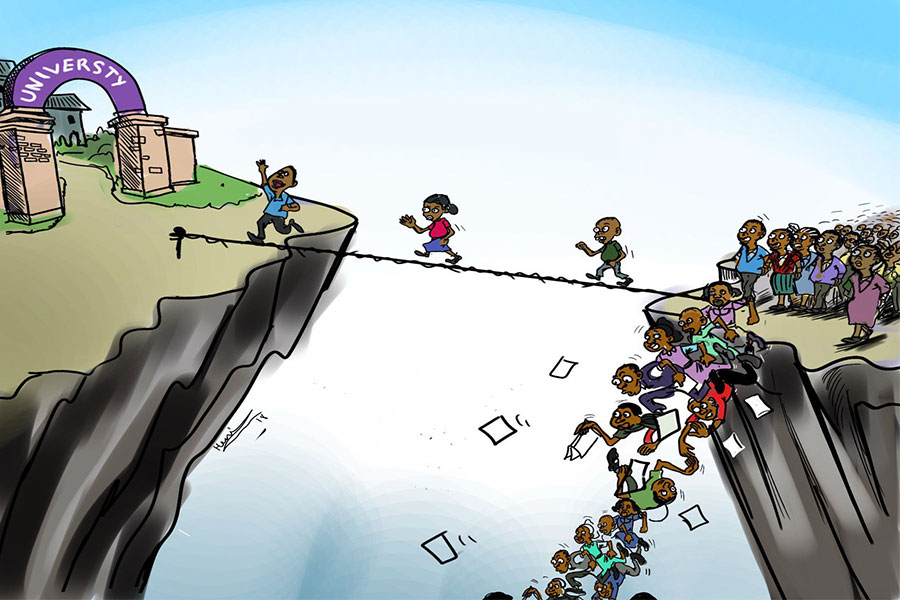
Verbatim | Jun 28,2025
Dec 10 , 2018
By
The agriculture sector remains a crucial sector for the development of African economies. Governments and multilateral institutions thus should work not only to create an environment for the development of the sector but find ways of making it attractive for the youth, writes Chimimba David Phiri, FAO subregional coordinator for Eastern Africa and FAO representative to the AU and ECA.
The African Union Commission estimates Africa’s youth population, between the ages of 15 and 35 years of age, at over a third of the continent’s population. Up to 12 million new jobs will have to be created every year to absorb new labour market entrants over the next two decades, according to the United Nations. This means that Africa must look into its economic streams to respond to this significant need.
Agriculture remains a critical economic sector on the continent, with over half of the workforce relying on it for employment, livelihoods and income.
Agriculture must, therefore, create decent job opportunities for the burgeoning youth population. On the other hand, utilising this human resource of youth to drive the agriculture sector is a crucial step to harnessing the demographic dividend. Youth in agriculture can transform African economies and expel food insecurity and poverty.
East Africa is no exception when it comes to the ever-growing population of youth. The region is home to an increasingly young population. In 2010, East Africa’s youth population was estimated to be approximately 50 million. This number continues to grow, and it is estimated that three-quarters of East Africa’s total population will be under the age of 34 in 2030.
Like the rest of Africa, East African countries are heavily dependent on agriculture, especially on family farming.
The agriculture sector has the potential to boost the creativity, energy, innovation and entrepreneurship of the youth, create decent employment opportunities and wealth and curb youth distress migration. Agriculture can, and will continue to, generate employment for youth in the future, but we must identify opportunities along the entire value chain from farm-to-table to create enough jobs for the youth.
Unfortunately, many young people do not perceive agriculture as a worthwhile or attractive means of earning a living. Most available jobs in agriculture are associated with low and unstable incomes. Moreover, the technologies currently used in the bulk of smallholder agriculture in developing countries are simply not appealing to youth, who would rather migrate to cities, or other countries altogether, searching for better-remunerated employment opportunities.
Youth migrate because of socio-economic factors, including poverty, food insecurity, lack of employment opportunities, limited access to social protection, natural resource depletion and the adverse impacts of environmental degradation and climate change. Such distress migration often causes a loss of productive human capital in the originating African countries. As more people move to cities, the demand for urban food markets grows, which in turn is expected to generate job opportunities in agriculture.
African governments and non-governmental and international organisations are fully aware of the potential of youth in agriculture and are increasingly implementing youth-specific capacity development initiatives in support of youth involvement in agriculture. These include training youth in agribusiness, facilitative ICTs and supporting youth in agricultural cooperatives.
However, more intensive and coordinated effort is required to develop a more modern agricultural sector in Africa, and thereby unlock the full potential of the youth. There is also a need to work on the image of agriculture towards youth, which could help change mindsets.
To make agriculture attractive to youth, we need to transform agriculture from its age-old focus on production alone, and its associated perception of drudgery, into an ICT supported innovative sector that facilitates links between production and the market with the collaboration of key stakeholders including the private sector. Governments can also help foster the creation of an enabling environment where the youth can access knowledge concerning market structures, and access loans to help them start up and expand.
Youth will require support from governments and development actors to properly access land, market, technologies and practical skills to prosper in this sector. Engaging youth in agriculture and retaining them in the sector is a strategy that will both contribute to increasing agricultural productivity and addressing youth unemployment.
Moreover, the inclusion of youth in policy making is also a key factor. Involving youth in policy crafting on matters that affect them will help empower them and enable them to voice their needs in agriculture-related decisions made at higher levels.
Harnessing the demographic dividend will assist countries in responding to both the African Union’s Malabo Declaration and the Sustainable Development Goals, simultaneously. Youth are the key to tomorrow’s economic transformation and food security and nutrition security.
The recent Africa-wide meeting on harnessing youth employment in agriculture in Kigali, co-organized by the Government of Rwanda, the African Union Commission and Food & Agriculture Organization of the United Nations (FAO) [of which the author of this article is the sub-regional coordinator for East Africa], showcased the talents of young people who have decided to earn their livelihoods in agriculture. Fortunately, many more youth are joining them.
PUBLISHED ON
Dec 10,2018 [ VOL
19 , NO
972]

Verbatim | Jun 28,2025

My Opinion | Sep 20,2025

Commentaries | Dec 07,2024

Fortune News | Nov 06,2021

Radar | Nov 27,2018

Commentaries | Dec 23,2023

Radar | Nov 03,2024

Agenda | Jan 28,2023

Commentaries | Apr 01,2023

Commentaries | Feb 22,2020

Photo Gallery | 169011 Views | May 06,2019

Photo Gallery | 159254 Views | Apr 26,2019

Photo Gallery | 148739 Views | Oct 06,2021

My Opinion | 136154 Views | Aug 14,2021

Dec 22 , 2024 . By TIZITA SHEWAFERAW
Charged with transforming colossal state-owned enterprises into modern and competitiv...

Aug 18 , 2024 . By AKSAH ITALO
Although predictable Yonas Zerihun's job in the ride-hailing service is not immune to...

Jul 28 , 2024 . By TIZITA SHEWAFERAW
Unhabitual, perhaps too many, Samuel Gebreyohannes, 38, used to occasionally enjoy a couple of beers at breakfast. However, he recently swit...

Jul 13 , 2024 . By AKSAH ITALO
Investors who rely on tractors, trucks, and field vehicles for commuting, transporting commodities, and f...

Sep 27 , 2025
Four years into an experiment with “shock therapy” in education, the national moo...

Sep 20 , 2025
Getachew Reda's return to the national stage was always going to stir attention. Once...

Sep 13 , 2025
At its launch in Nairobi two years ago, the Africa Climate Summit was billed as the f...

Sep 6 , 2025
The dawn of a new year is more than a simple turning of the calendar. It is a moment...

Sep 27 , 2025
Meskel Square turned into a rolling wave of colour and sound on Friday, September 26, 2025, as thousands pressed toward the annual bonfire c...

Unity University has increased tuition fees sharply, jolting students and families alike, drawing critici...

Sep 27 , 2025 . By BEZAWIT HULUAGER
Seventeen years after its inception as a flagship market reform for agricultural modernisation, the Ethio...

Sep 27 , 2025 . By BEZAWIT HULUAGER
The elevator industry is bracing for sweeping reforms as construction regulators are to impose the first...